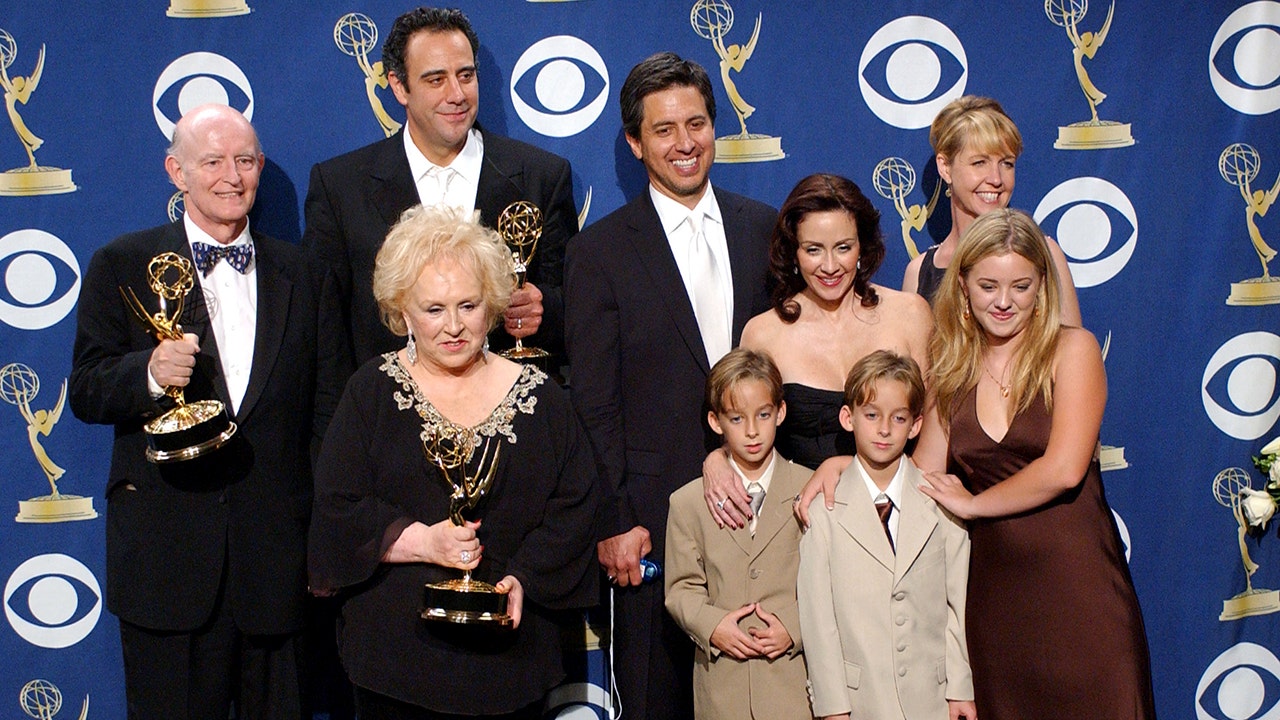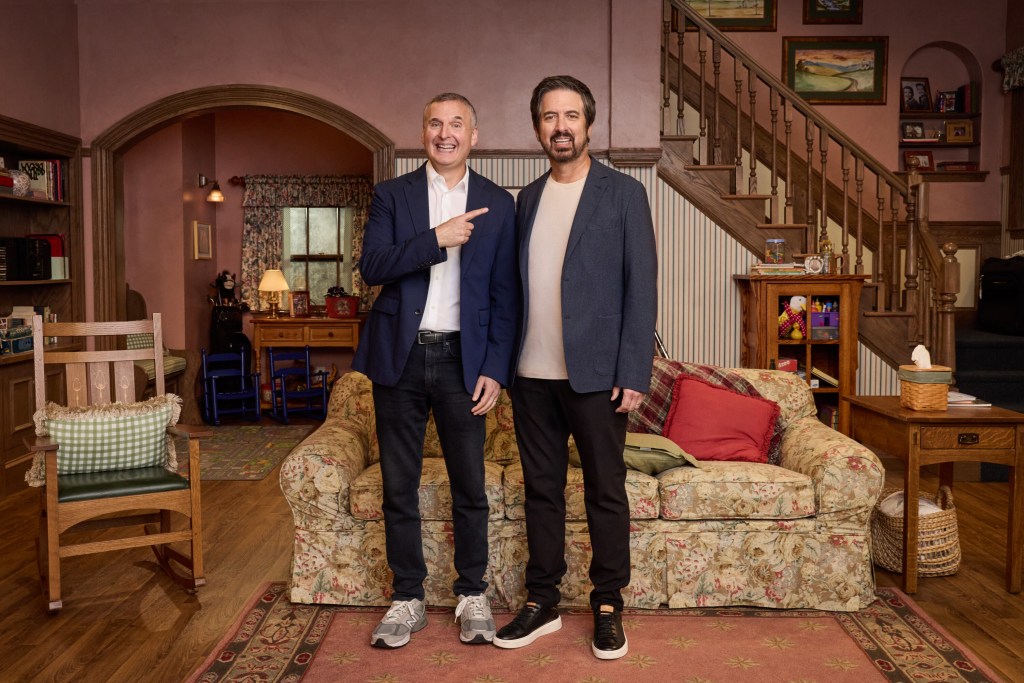The Anatomy of a Calculated Ghost
Let’s be perfectly clear. The recent reunion of the ‘Everybody Loves Raymond’ cast isn’t a heartwarming get-together driven by a burning artistic desire to reconnect with the fans. It is a carefully calibrated activation of a dormant intellectual property. For a decade, creator Phil Rosenthal shopped this very idea around, and for a decade, the industry’s response was a collective yawn. Because no one saw the profit margin. Nobody wanted it.
But something changed. That something is the streaming wars, a content arms race so desperate for established, pre-sold brands that executives are now digging through the tombs of 90s television like frantic archaeologists searching for anything with a recognizable pulse. And so, after ten years of rejection, the ‘Raymond’ reunion suddenly became a viable asset. It’s not a passion project. It’s a line item on a quarterly content budget, designed to lure in subscribers of a certain age with the promise of a bygone era, a fleeting dopamine hit of manufactured nostalgia before they cancel their subscription.
The Reboot That Never Was, and Never Could Be
The most telling detail in this whole affair is the immediate and forceful shutdown of any reboot talk. They are adamant. It will never happen. And they frame this as a noble artistic choice, a desire to protect the show’s legacy. A convenient narrative. The truth is far less poetic and far more brutally practical. They can’t do a reboot. It is a logistical and emotional impossibility. The very foundation of the show’s comedic engine, the generational conflict that fueled every single episode, rested on the shoulders of Peter Boyle (Frank Barone) and Doris Roberts (Marie Barone). They are gone. To attempt a reboot without them wouldn’t just be difficult; it would be a grotesque puppet show, a hollowed-out mockery of the lightning-in-a-bottle chemistry that made the series a cultural juggernaut. Frank’s cynical apathy and Marie’s weaponized martyrdom were the two poles that the entire family system orbited around, and without them, there is no orbit. There is just a void.
So when Ray Romano or Phil Rosenthal says they won’t do it to ‘preserve the memory’ of their fallen castmates, what they are really saying is that the core components of their machine are rusted and broken beyond repair. The business of a reboot is simply not viable. The reunion special, however, is the perfect workaround. It requires minimal creative effort, no new scripts, no difficult recasting decisions. It’s a clip show with live commentary. It allows them to monetize the memory of the show without the immense risk and inevitable failure of trying to actually resurrect it from the dead. It’s a ghost story told for profit.
Deconstructing the “Magic” – Why It Can’t Be Replicated
Why did ‘Everybody Loves Raymond’ work so well in the first place? It certainly wasn’t for its groundbreaking premise. A hapless man-child, his long-suffering wife, his meddling parents, and his perpetually overshadowed brother. This is a formula as old as television itself. But what ‘Raymond’ did was perfect the execution of that formula to a clinical degree. The writing was a relentless, machine-gun-fire of setup and punchline, honed in a writers’ room that famously operated like a therapy session, mining the real-life miseries of its staff for comedic gold. It was authentic in its absurdity. Every character was deeply flawed, often unlikable, but their dysfunctions were so finely drawn and so perfectly balanced against each other that the result was a kind of chaotic, stressful harmony.
And you simply cannot replicate that in 2024. Not a chance. The cultural landscape has shifted seismically. The multi-camera sitcom, filmed before a live studio audience, is now a relic, a nostalgic curiosity rather than the dominant force in comedy it once was. The comedic sensibilities of today, shaped by the single-camera mockumentary style of ‘The Office’ and the cinematic ambitions of shows like ‘Fleabag’ or ‘Barry’, would make the rhythm of a classic sitcom feel stilted and archaic. Imagine trying to pitch the character of Marie Barone today – a mother who emotionally manipulates her children, constantly criticizes her daughter-in-law’s cooking and housekeeping, and infantilizes her adult sons. In the 90s, she was a hilarious archetype. In 2024, she would be dissected on TikTok as a case study in narcissistic personality disorder.
The Escape from the Sitcom Prison
And let’s not forget the actors themselves. The mention that someone in the cast ‘won’t do a sitcom again’ is telling. For an actor, a successful sitcom is a golden cage. It offers unimaginable financial security but at the cost of being typecast forever, forced to repeat the same beats and catchphrases for hundreds of episodes. Ray Romano has spent the years since ‘Raymond’ actively trying to deconstruct his lovable schlub persona with darker, more dramatic roles in projects like ‘The Irishman’ and ‘Vinyl’. Patricia Heaton found success on another long-running sitcom, ‘The Middle,’ but has also branched out. They’ve served their time in the multi-cam trenches. Why would they go back? The reunion offers a brief, painless visit to the old homestead. They can wave to the neighbors, collect an appearance fee, and be back in their real lives by dinner. A full reboot would mean moving back in with the parents, permanently. It is an artistic regression they have no incentive to make.
The Unspoken Truth of Nostalgia as a Product
This entire spectacle is a symptom of a much larger, more cynical trend in entertainment. We are living in an age of weaponized nostalgia. The creative wells of Hollywood have run so dry, and the fear of launching a new, original idea is so profound, that the entire business model has shifted to cultural grave-robbing. It’s about identifying beloved properties from the past, exhuming their corpses, and parading them around for a new generation of consumers and a desperate older generation yearning for the perceived simplicity of a pre-9/11, pre-social media world. From ‘Friends’ to ‘Frasier’ to ‘Sex and the City,’ the reunion or the ‘re-quel’ has become the industry’s default setting.
Because it is safe. It is predictable. The marketing is built-in, piggybacking on decades of goodwill and syndicated reruns that have kept these characters alive in the public consciousness. This ‘Everybody Loves Raymond’ reunion is the perfect embodiment of this strategy. It’s not a creative endeavor; it’s an exercise in brand management. It exists to remind subscribers that this content is available on their platform, to reinforce the value of a back catalog, and to squeeze the last few drops of revenue from a property that has long since ceased to be a living, breathing entity. The personal story of the show bringing a mother and daughter closer isn’t just a sweet anecdote; it’s the very emotional territory that these media conglomerates seek to colonize and exploit for profit.
So, when the cast gathers on a meticulously recreated set to share a few sanitized anecdotes, don’t mistake it for a genuine family reunion. It’s a corporate board meeting in disguise. It is the final, logical step in the lifecycle of a piece of popular art: its transformation from a television show into pure, unadulterated content. The fact that a buyer was finally found doesn’t mean the world suddenly remembered its love for Raymond Barone. It just means the streaming platforms finally got desperate enough to pay for the ghost.


